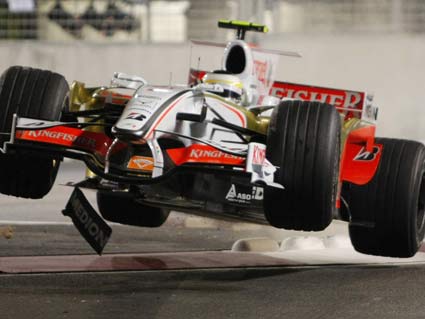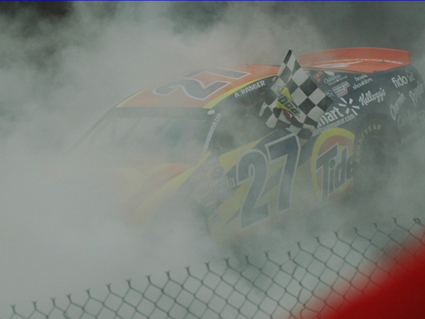Driving in F1 championship is not a child game. A driver participating in F1 race gains the required skills and fitness after rigorous training. Lets read some interesting facts related to F1 drivers.

Loose about 4 Kg in one race: F1 drivers have prolonged exposure to high gravitation forces and temperatures for little over an hour. This results in an average F1 driver losing about 4kgs of weight after just one race. However he regains weight afterwards.
Dehydration: The Formula One cockpits generate lot of heat and make drivers sweat off their weight during the race. Before race, drivers drink lot of water to avoid dehydration. In the days preceding very hot races like Australia, Malaysia, and Brazil, the drivers can drink up to 8 litres of water. Normally the drivers can lose approximate 2 to 3 liters of water.

High gravitation and the high psycho-physical pressure: Sports studies have underlined the importance of fluid level in the body. A person who has lost 4% of body weight can lose up to 40% of their psycho-physical ability.
Even tyres lose weight: During the race the tyres lose weight! Each tyre loses about 0.5kg in weight due to wear. Racing tyres are designed to last 90 - 120 km.
Remove steering to get inside: The fit in the cockpit is so tight that the drivers have to remove the steering wheel to get inside the car. A latch behind the steering wheel releases it from the column.
Mineral salt water in cockpit: The F1 cockpits have drinking bottle installed for the drivers. The water in it also has mineral salts. The drivers can drink water from it via a pipe.

Very risky: An F1 car is made up of 80,000 components, if would still start the race with 80 things wrong.
Speed game: An F1 car can go from 0 to 160 kph and back to 0 in Four seconds.
It's all about 2 hours: F1 car engines last only for about 2 hours of racing mostly before blowing up.
4 minutes for refueling: The refuelers used in F1 can supply 12 liters of fuel per second. This means it would take just 4 seconds to fill the tank of an average 50 litre family-car. They use the same refueling rigs used on US military helicopters today.
No number 13 for race: Numbers are assigned to all F1 drivers. The previous season's champion is given number 1, and his team-mate is designated number 2. The number 13 is not designated to any driver.

Reaches up to 1000 Centigrade: The brake discs in an F1 car have an operating temperature of approximately 1000 degrees Centigrade and they attain that temp while braking before almost every turn.
First be a cart racer to be a F1 driver: Kart racing or karting is a variant of open-wheel motorsport with small, open, four-wheeled vehicles called karts, go-karts, or gearbox/shifter karts depending on the design. They are usually raced on scaled-down circuits. Most F1 drivers start their career in karting. They come up through traditional European single seater series like Formula Ford, Formula Renault, Formula 3, and finally GP2. Before GP2, Formula Two and then Formula 3000 served the role of feeder series for F1.







.jpg)





